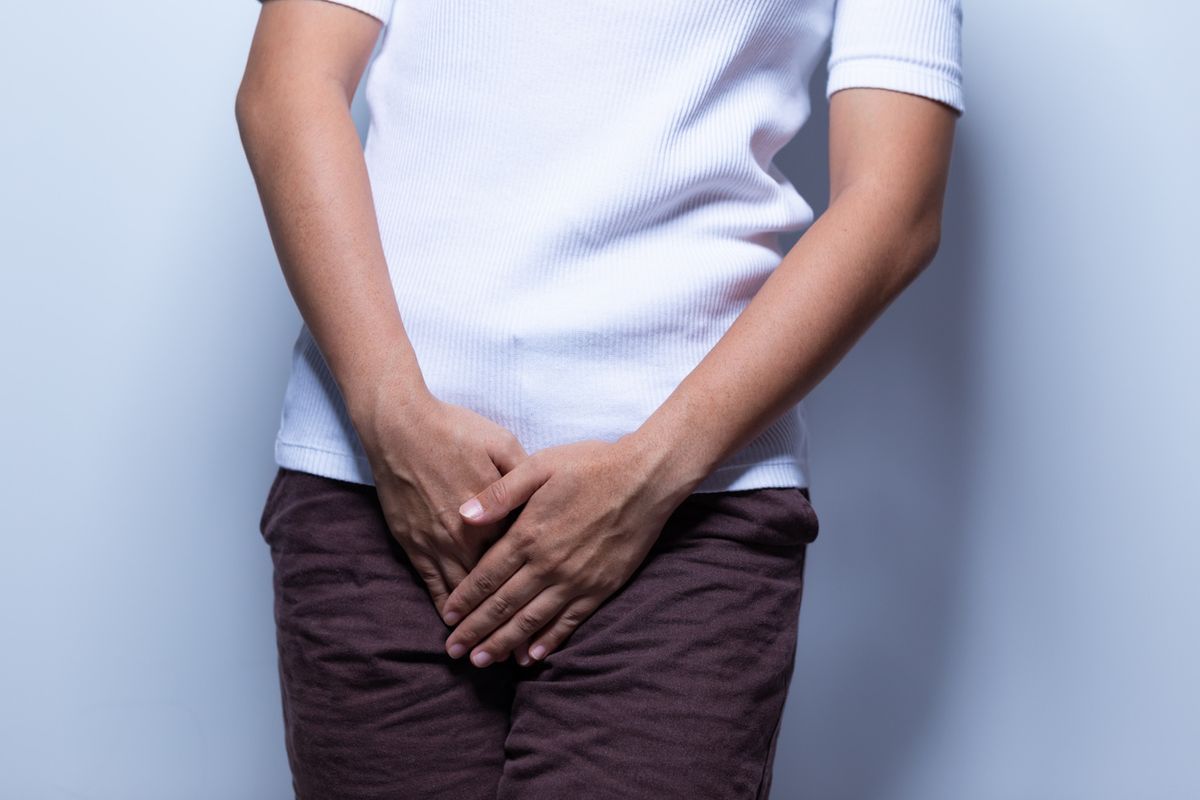
Genital Itchiness: What You Need to Know About Lichen Sclerosus
What you need to know about lichen sclerosus
Sep 16, 2009
Sep 23, 2020
Your Body
Learn about our editorial policies

Lichen sclerosus is a dermatological condition that primarily affects the genital area. Most cases occur in postmenopausal women, but about 7 percent to 14 percent occur in girls who have not yet started menstruating. However, LS can also occur in men (typically on the tip of the penis) and even, rarely, in very young children.
Lichen sclerosus involves the vulva (the external part of the female genitalia) or the perianal area, around your anus. In rare instances, it can also appear on the clitoris or labial folds. Lesions may also appear on your back, chest, neck, armpits, forearms, collarbones, breasts and legs.
When they first appear, the skin lesions are small, white, shiny and smooth. Over time, however, they grow larger, causing cracking and abrasions on the skin. They eventually thin the skin, leaving it crinkly and at risk of tearing and infection.
In very severe cases the lesions produce scarring of the vulva, with narrowing of the opening of the vagina and covering of the clitoris with the shrinking and disappearance of the clitoral lips. It can prevent women (or men) from having sexual intercourse, due to pain or scarring, and can affect urination. Skin scarred by LS is more likely to develop skin cancer than non-scarred skin, although the lesions themselves don't increase the risk of skin cancer.
No one knows what causes LS, but there seems to be a strong link between the disease and autoimmunity. Autoimmunity occurs when the immune system becomes overreactive, attacking the person's own tissue instead of only attacking foreign pathogens. Autoimmune diseases include other skin conditions like scleroderma, thyroid disorders such as hypo- and hyperthyroidism, lupus erythematosus and type 1 diabetes. One study found that four out of 10 patients with LS also had autoantibodies, a sign of an autoimmune disorder.
Sometimes the condition occurs in areas of the skin that have already experienced trauma, such as sunburn or radiation damage. It also appears to have some genetic component, since it is more common in families. Because LS is most common in postmenopausal women and young girls, researchers suspect it might be related to the low estrogen levels that occur during these times of life.
Since LS is also sometimes seen in the late stages of Lyme disease, it may follow a tick bite and possibly be induced by the bacterial spirochete, Borrrelia burgdorferi, found in Lyme disease. Case reports of LS from around the world have been linked to other Borrrelia species.
Treatment for LS
LS is usually treated with medication to relieve symptoms and prevent the condition from worsening—even if you don't have noticeable symptoms. It is especially important to treat LS that occurs in the genital area to prevent scarring, which can interfere with urination or sex.
The primary medications used to treat LS are high-potency corticosteroid creams or ointments, such as clobetasol propionate (Cormax, Temovate) or betamethasone dipropionate (Diprosone, Diprolene). The ointments usually are applied daily for several weeks and then twice a week for an extended period to prevent recurrence. Side effects include burning, irritation, dryness, flaking, discoloration and thinning of the skin, but doctors report the main side effect is a short-term burning sensation. Sometimes steroid injections are given if steroid ointments are not effective.
Studies also suggest that the immune-modulating creams pimecrolimus (Elidel) and tacrolimus (Protopic) can help. These medications are approved for the treatment of eczema and atopic dermatitis and are generally safe when used for the short-term. Long-term use could increase the risk of cancer. If ointments and other treatments don't work, your doctor may prescribe the oral medication acetretin (Soriatane), a retinoid, which is a form of vitamin A that helps regulate cell growth. Acetretin is not approved by the U.S. Food and Drug Administration for treating LS, but your doctor can prescribe it "off-label." It has many side effects, including severe birth defects, so it is not recommended for women of child-bearing age. If you are having trouble sleeping at night because of itching and burning, your doctor may also prescribe antidepressants or tranquilizers.
Other studies suggest that ultraviolet light, often used to treat other skin conditions, may help reduce the lesions and symptoms of LS on nongenital skin.
Surgery may be an option for men with lichen sclerosus on the foreskin; circumcision usually permanently removes lesions. Surgery is not recommended for removing women's lesions, because lesions often return, but it may be used to remove scarring.
Lifestyle changes can also help prevent or reduce the discomfort from LS, such as using nonallergenic soaps, wearing cotton underwear during the day and no underwear at night and avoiding scratching the genital area. One study demonstrated beneficial effects in 15 LS cases treated with intramuscular antibiotics, either ceftriaxone (Rocephin) or penicillin G benzathine (Bicillin LA), combined with an oral antibiotic (cephalosporin or penicillin). When given over several months, this treatment led to marked improvement in pain, itching and burning in all patients and complete clearing of skin lesions in four patients.
If you think you might have this condition, see your health care professional. Typically, dermatologists, gynecologists and urologists are most likely to treat the condition. You should be followed for this condition with annual or semiannual examinations.